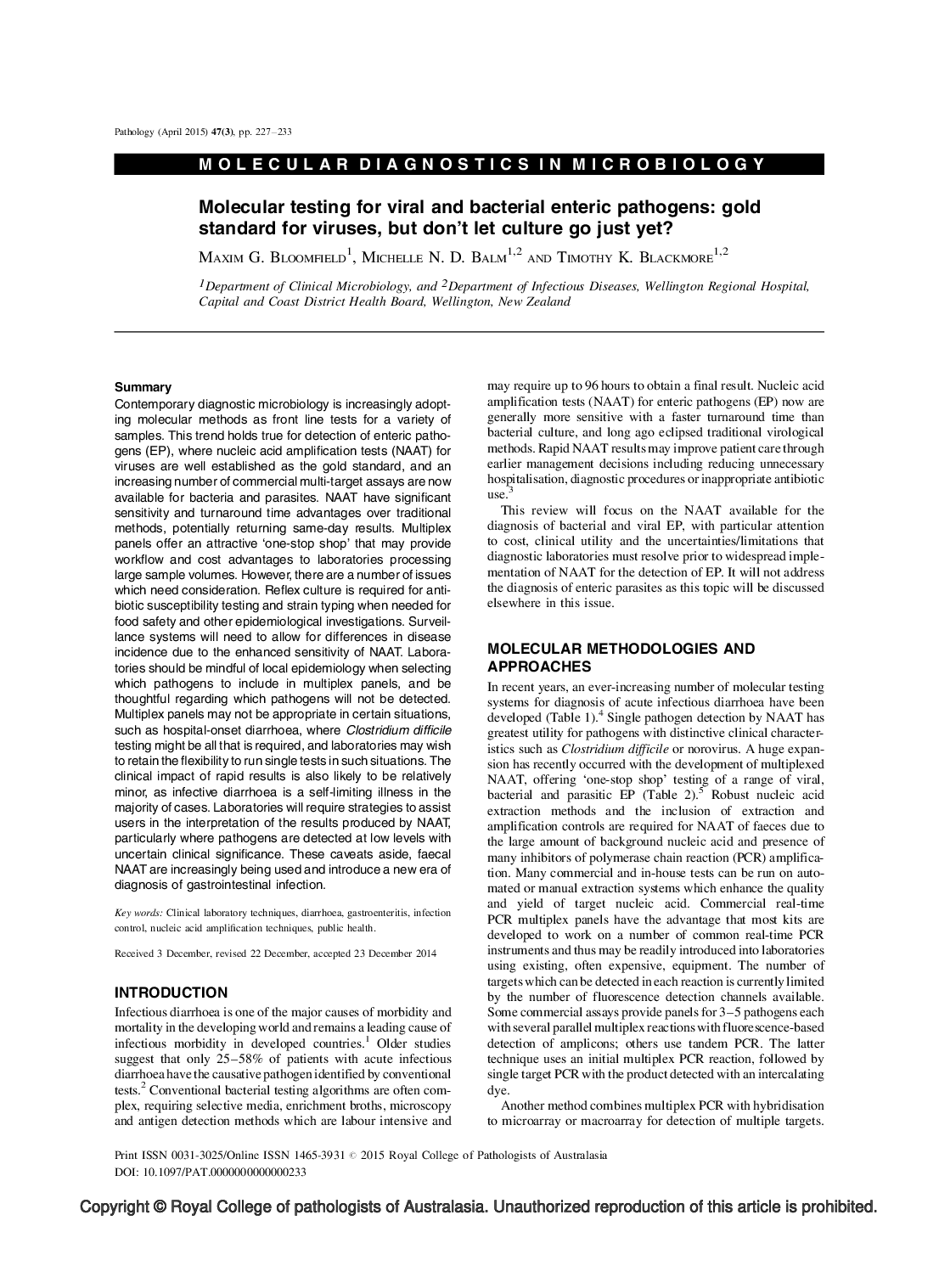| کد مقاله | کد نشریه | سال انتشار | مقاله انگلیسی | نسخه تمام متن |
|---|---|---|---|---|
| 10254968 | 161481 | 2015 | 7 صفحه PDF | دانلود رایگان |
عنوان انگلیسی مقاله ISI
Molecular testing for viral and bacterial enteric pathogens: gold standard for viruses, but don't let culture go just yet?
ترجمه فارسی عنوان
آزمایش مولکولی برای پاتوژن های ویروسی و باکتری های انتروکیک: استاندارد طلای برای ویروس ها، اما اجازه نمی دهد که فرهنگ هنوز به پایان برسد؟
دانلود مقاله + سفارش ترجمه
دانلود مقاله ISI انگلیسی
رایگان برای ایرانیان
کلمات کلیدی
تکنیک های آزمایشگاهی بالینی، اسهال، گاستروانتریت، کنترل عفونت، تکنیک های تقویت اسید نوکلئیک، سلامت عمومی،
موضوعات مرتبط
علوم پزشکی و سلامت
پزشکی و دندانپزشکی
پزشکی قانونی
چکیده انگلیسی
Contemporary diagnostic microbiology is increasingly adopting molecular methods as front line tests for a variety of samples. This trend holds true for detection of enteric pathogens (EP), where nucleic acid amplification tests (NAAT) for viruses are well established as the gold standard, and an increasing number of commercial multi-target assays are now available for bacteria and parasites. NAAT have significant sensitivity and turnaround time advantages over traditional methods, potentially returning same-day results. Multiplex panels offer an attractive 'one-stop shop' that may provide workflow and cost advantages to laboratories processing large sample volumes. However, there are a number of issues which need consideration. Reflex culture is required for antibiotic susceptibility testing and strain typing when needed for food safety and other epidemiological investigations. Surveillance systems will need to allow for differences in disease incidence due to the enhanced sensitivity of NAAT. Laboratories should be mindful of local epidemiology when selecting which pathogens to include in multiplex panels, and be thoughtful regarding which pathogens will not be detected. Multiplex panels may not be appropriate in certain situations, such as hospital-onset diarrhoea, where Clostridium difficile testing might be all that is required, and laboratories may wish to retain the flexibility to run single tests in such situations. The clinical impact of rapid results is also likely to be relatively minor, as infective diarrhoea is a self-limiting illness in the majority of cases. Laboratories will require strategies to assist users in the interpretation of the results produced by NAAT, particularly where pathogens are detected at low levels with uncertain clinical significance. These caveats aside, faecal NAAT are increasingly being used and introduce a new era of diagnosis of gastrointestinal infection.
ناشر
Database: Elsevier - ScienceDirect (ساینس دایرکت)
Journal: Pathology - Volume 47, Issue 3, April 2015, Pages 227-233
Journal: Pathology - Volume 47, Issue 3, April 2015, Pages 227-233
نویسندگان
Maxim G. Bloomfield, Michelle N.D. Balm, Timothy K. Blackmore,
